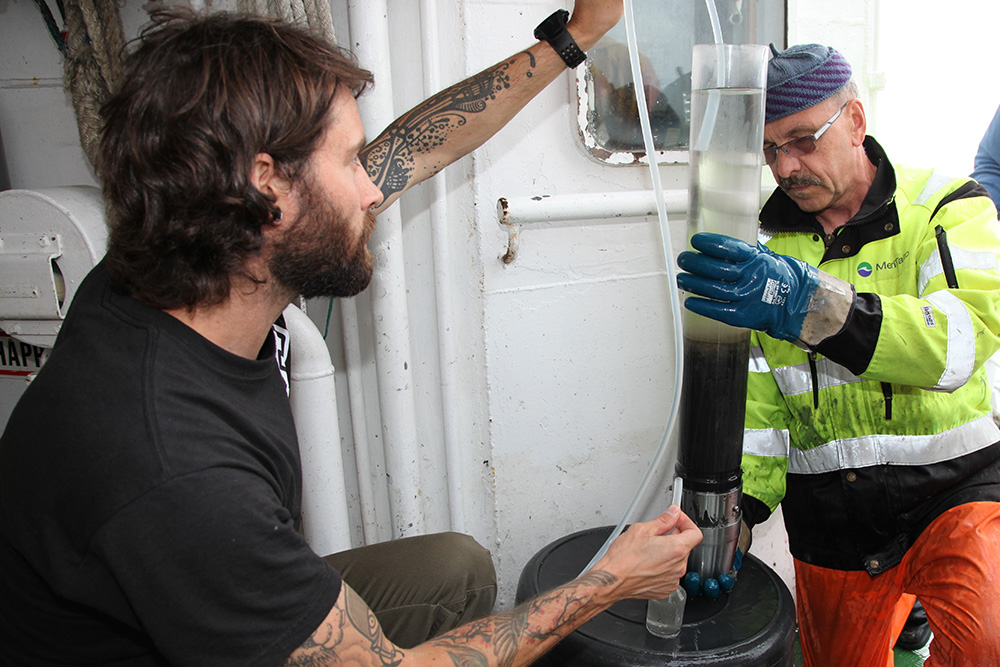
The coastal waters of Helsinki tell the tale of civilization and urbanization.
Only five years ago, biological oceanographer Emil Vahtera was diving in the freezing Atlantic Sea as early as February, conducting post-doctoral research at Wood’s Hole Oceanographic Institute near Boston. After three years at the institute, he switched to the shallower but no less demanding waters of the Gulf of Finland in the Baltic Sea, to analyze the state of the coastal waters of Helsinki as the chief marine researcher at the City of Helsinki Environment Centre.
In Boston, Vahtera studied a species of marine plankton that can make edible mussels unfit for human consumption, among its other harmful effects. In Helsinki, some of his main interests are the harmful effects of excessive nutrients on the sea.
Sea burdened by human activity
Helsinki is powerfully defined by the sea. The city centre is surrounded by the sea on three sides, much of Helsinki is on islands, and most of the main current development is on waterfronts. The sea forms a backbone of Helsinki’s economy through commerce, trade and travel.
On a bright summer day, the sea invites boaters, fishermen and swimmers. Throughout the year, it offers breathtaking views.
Vahtera, however, sees a different view under the waves.
The sea at the Helsinki metropolitan area, as the Baltic Sea as a whole, has received large external nutrient loads for decades, mainly from municipal wastewaters, agriculture and other runoff from land. The excessive input of nutrients has caused eutrophication in the sea – a dense growth of plant life, resulting in lack of oxygen and subsequent death of animal life. The phenomenon is all too familiar from many other water bodies in the world that are surrounded by civilization.
In summers 2012 and 2013, the Environment Centre coordinated the largest study of the state of Helsinki’s coastal water areas to date, conducted on research vessel Muikku. The study focused on near-bottom waters and sea bottoms. Vahtera led the analysis of samples and co-authored a newly published report on the results.
Improvement can be achieved
“The big picture is that the sea bottoms near Helsinki are in poor condition,” Vahtera summarizes the overall result of the study.
Oxygen-poor near-bottom water covered approximately 12 percent of the sea bottoms studied. Such sea bottoms are scattered off the coast of Helsinki, but a large bottom area connected to the Gulf of Finland’s deep-water area is consistently oxygen-poor.
Vahtera explains, “The near-bottom waters of the coastal areas remain in poor condition because of the external nutrient load and phosphorus that is released from sea bottoms. The internal load of phosphorus upholds a eutrophied state of the coastal sea.”
In a healthy condition, the sea absorbs nutrients, but when the external nutrient load exceeds the capacity of the sea to absorb, the result is a reverse process and sea bottoms start to release nutrients.
Vahtera estimates that, at its worst, the internal load of phosphorus is approximately 10-fold compared to the external load, but the internal load varies highly over an annual cycle and can be lower overall than the external load.
Vahtera does not see the situation as entirely bleak. Based on previous studies that go back several decades, the oxygen conditions in the coastal waters of Helsinki have recovered somewhat in many places as external nutrient loads have diminished.
“We can achieve improvement in the long run with systematic efforts to reduce external loads,” he assures. “We should especially focus on reducing nitrogen loads.”
A city on the sea
Marked improvement has already been achieved locally.
The state of Helsinki’s inner bays has improved significantly over the past decades thanks to diminished nutrient loads. A major step forward was the opening of the Viikinmäki wastewater treatment plant in Helsinki in the 1990’s. The plant removes phosphorous and nitrogen highly efficiently and releases the effluent into the sea 8 kilometres off the Helsinki coastline.
Besides the Viikinmäki plant, Helsinki’s coastal waters are affected by other public utilities in the metropolitan area, the harbours of the Port of Helsinki and industrial operations such as dockyards. On behalf of these operations, the Environment Centre monitors the quality of local waters to make sure that the operations do not excessively impact the environment.
Helsinki’s coastal waters also face new realities. The major waterfront development in Helsinki – in Kalasatama, Jätkäsaari and Kruunuvuorenranta – will create new constructed shoreline in the city.
“We can see that we’re at a big city,” Vahtera says, commenting on Helsinki’s underwater seascape.
Campaign to improve the state of the Baltic Sea
The study of the coastal waters and sea bottoms at the Helsinki metropolitan area was part of the Baltic Sea Challenge, a campaign launched and managed by the cities of Helsinki and Turku to improve the state of their coastal waters and thereby the entire Baltic Sea.
Helsinki and Turku have drafted a list of commitments for themselves to improve the state of the sea and challenge other organizations, from small to large, to do the same.
The Helsinki and Turku action plan lists concrete measures to reduce the nutrient loads to the sea. The cities improve their sewer networks, wastewater treatment and storm water management, and they even curb agricultural loading from city-owned farms. They promote environmentally-friendly water transport by measures that include accepting wastewater from international cruise ships free of charge and building equipment to receive wastewater from boats. They develop their oil spill response readiness, and they seek to reduce hazardous substances and littering in maritime nature.
In 2014, approximately 200 organizations from Finland and other Baltic Sea countries had joined the Baltic Sea Challenge.
Read more at www.balticseachallenge.net


